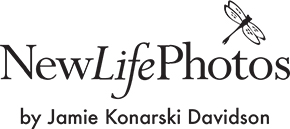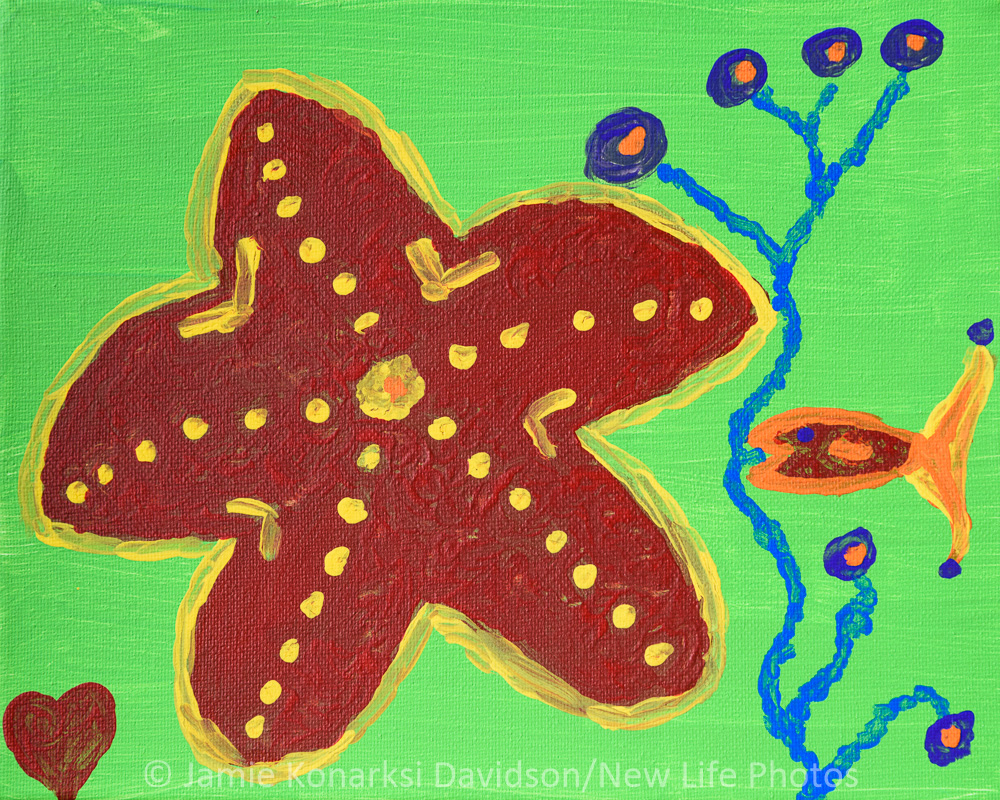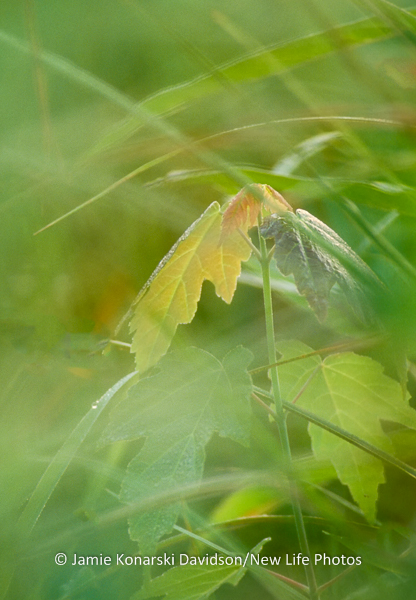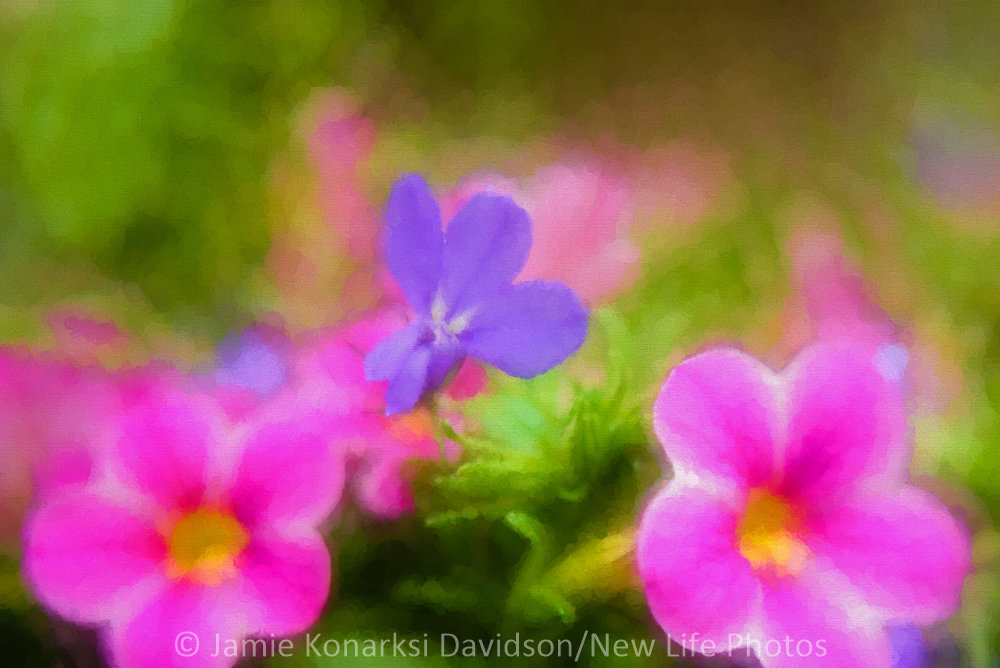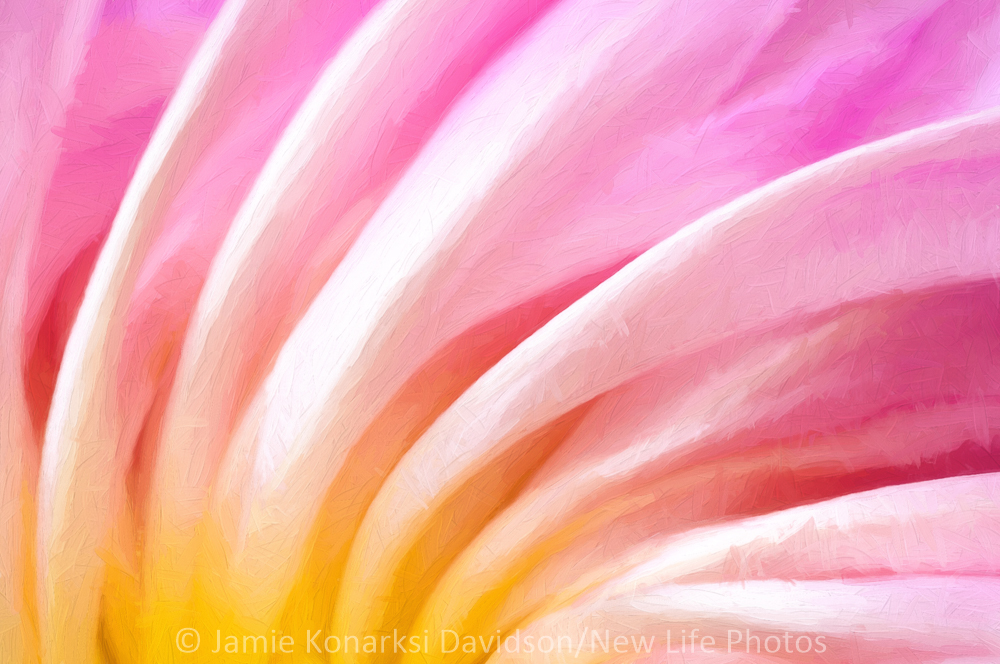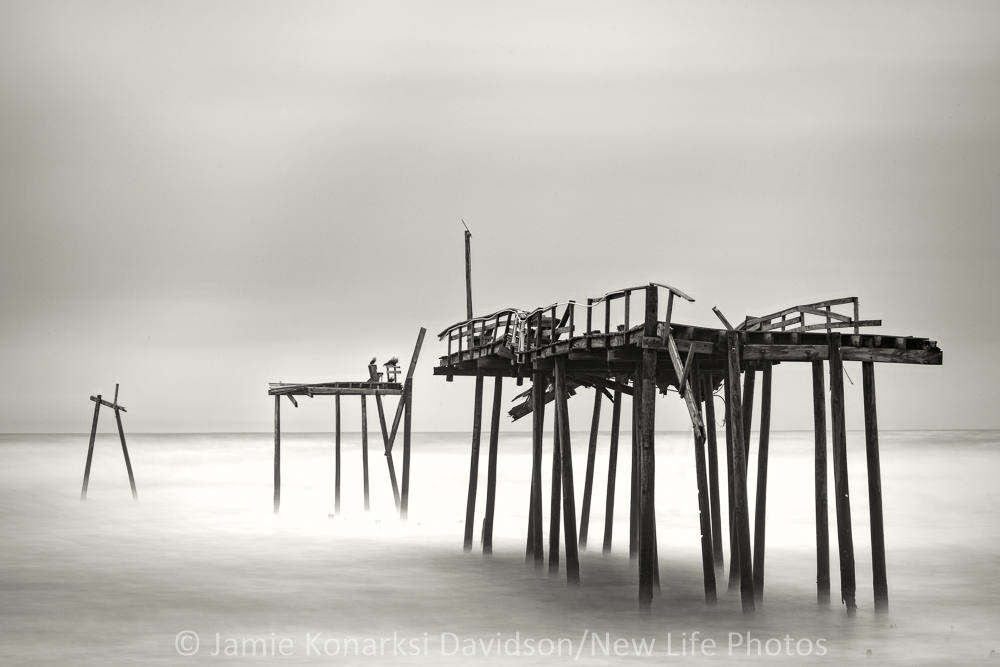All children are artists. The problem is how to remain an artist once he (or she) grows up. —Picasso
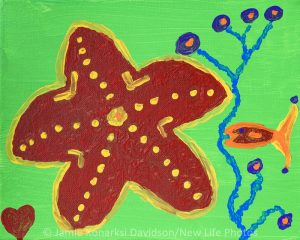
Yup. I did it. This masterpiece is my “first” painting, It clearly illustrates a lack of knowledge and limited passion in the process. We all start somewhere…
Here’s a picture I painted using another much more refined painting as my guide (I added the fish in weeds and the little heart). It’s not good, even though I had the assistance of a five-year old girl directing what to add and when to stop. So, because I painted this, am I now “a painter”? Absolutely not. I know very little about the art and physical craft of painting pictures. In truth, I know more about painting walls and furniture than painting works of art.
So, what would move me closer to being an artist or painter? How about learning the fundamentals of painting and art from those who know far more than I do? What type of canvas do I use, how do I prepare it, what kind of paints should I use, and why? What brushes? How much paint on those brushes? How do I mix colors, create relationships between shadows and light or show textures in two-dimensions? Without direction, guidance and lots of practice, my vision could easily be lost. (Refer to my first attempt at painting, done just for fun and with little vision.)
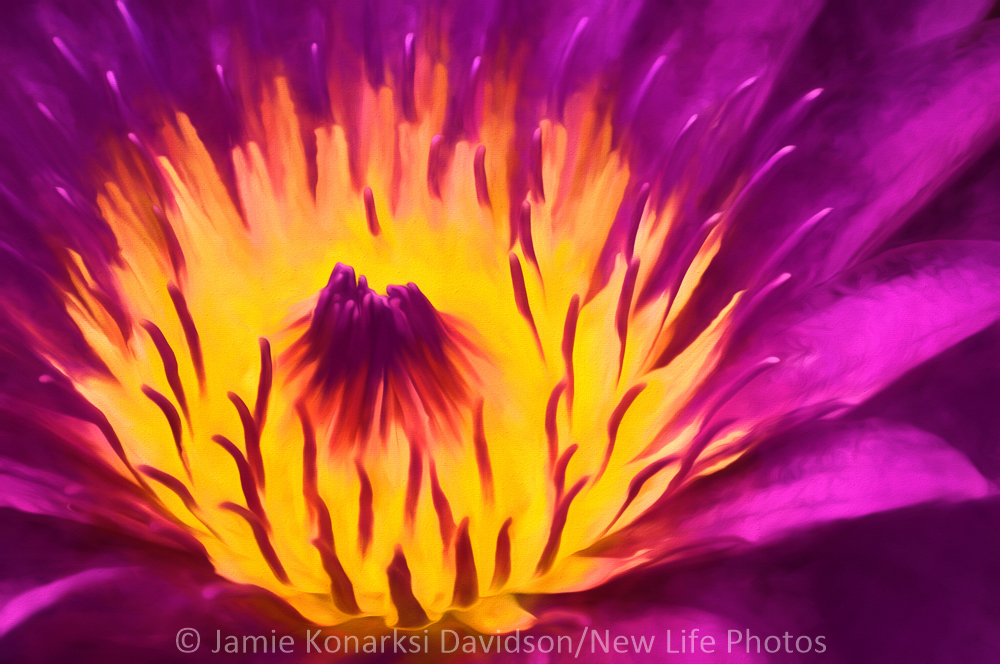
One of my favorite images as it might have been painted by Georgia O’Keeffe. (Thanks for the help, Topaz Impression!)
These same ideas apply equally well to photographers. It took a long time for me to be able to call myself “a photographer.” It took even longer for me to call myself an artist. It is a good feeling to be able to own and identify myself as a “visual artist”. It confirms for me an understanding of my craft and my vision, and that in my favorite images those two are one. Both are fluid and evolving. If either one becomes static (especially my vision), my growth as an artist or photographer stops.
In the beginning, when I bought my first “real” film camera, a Nikon N70, and two lenses, I knew how to load the film, look through the viewfinder, zoom the lens and press the shutter – not much more. As a result, I took pictures and relied on the camera and photo lab to help me capture things I saw and present them as I saw them. I got “lucky” sometimes, but more often the images fell short of speaking to what I saw and was responding to with the camera. I was armed with a vision, but lacked the technical knowledge to successfully capture with my camera. I needed to know more, but had not a clue as to how much more there was to learn. What I know, even now, is that there is never “nothing to learn.”
One of the many turning points for me as a photographer came in the summer of 1998. I gave myself a week-long photography workshop in Pennsylvania at Hoot Hollow with Joe and Mary Ann McDonald. I had that Nikon and two lenses, a flash I knew nothing about, and tripod with a head I hated. I drove ten hours to get there and was super excited to learn. That first night Joe said, “And, tonight we’re going to start with a metering exercise!” I cringed and wondered how small I could make myself before I was invisible. I had no clue. I heard comments about metering “here” and adding “+2/3” or there and setting at “-1.” This confirmed that I was at the very beginning of my journey to becoming a photographer and artist. I thank Joe and Mary Ann for scaring me straight.
From that point in 1998, what did I do to build my skills and knowledge? I joined Carolinas Nature Photographers Association and North American Nature Photography Association in 1999, attended annual meetings and Summits wherever and whenever they were held. I met excellent photographers and some very fine people along the way – people who have become friends and mentors, inspirations and encouragers. I took advantage of every learning opportunity that came along, workshops, seminars, shooting opportunities. I went out and took pictures, not always good ones. In fact, many of the early pictures I took back then had “issues.” I can see them now and have learned from them.
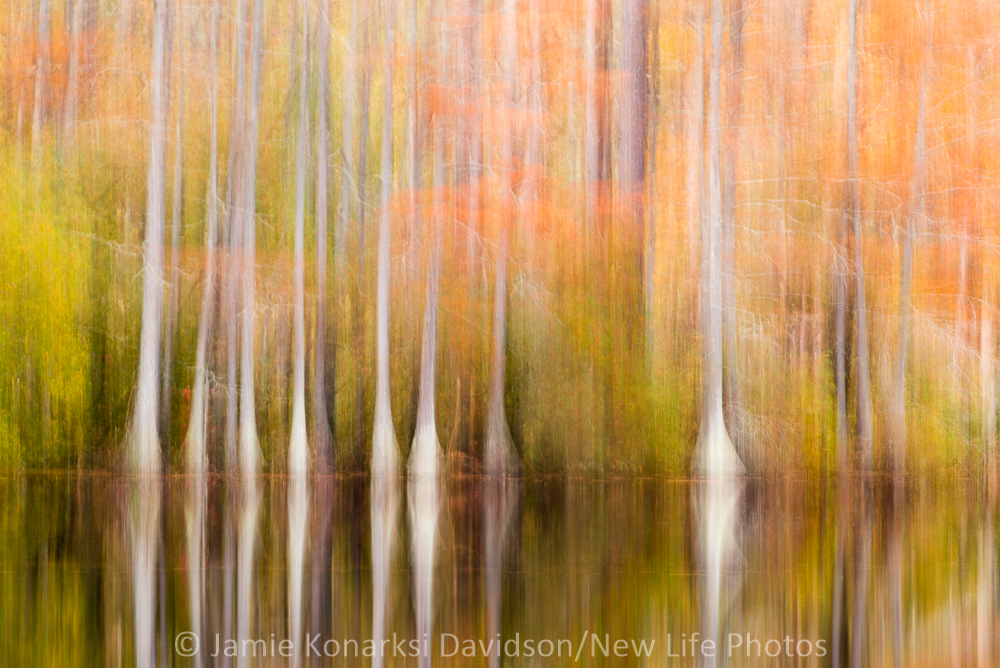
Slow vertical motion blur (in camera) at Carver’s Creek State Park highlighting fall color in the cypress trees.
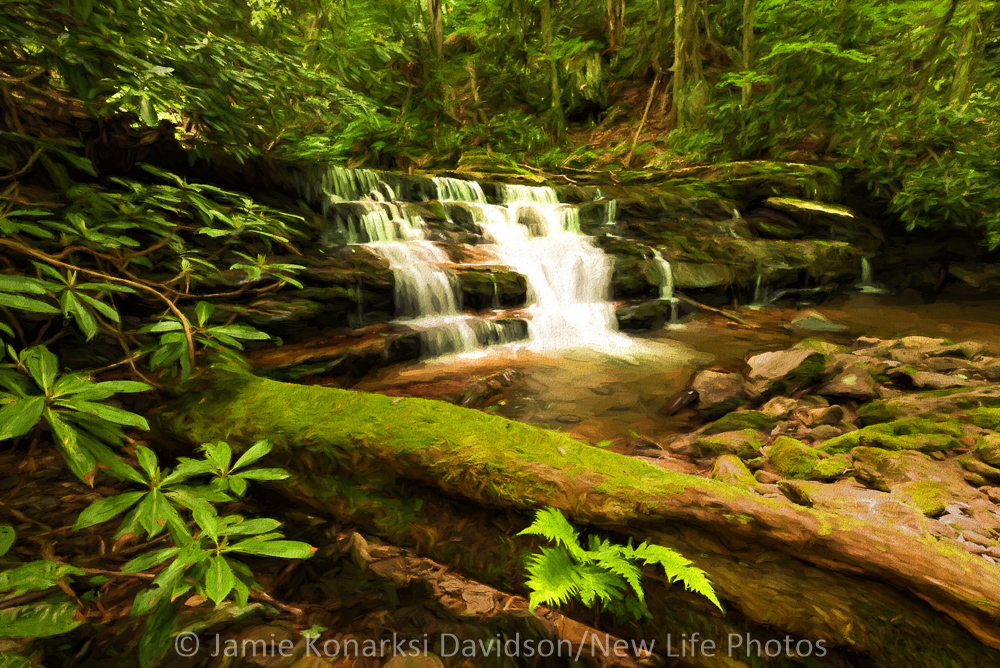
Whether you’re looking to express your vision in a landscape or single bloom, every ounce of knowledge you have in the craft will help you present it as you see and feel it.
I am “self-taught” in that I have no formal training in art or photography, and this is okay. In fact, at least one of my very favorite artists, Vincent van Gogh, did not go to art school. Education comes in all forms. I have learned from all the books I’ve read, all the music I’ve heard, all the art I’ve seen. I’ve learned from every person (including artists, photographers, musicians) I’ve ever met or spent time with. Every challenge and every moment of peace has taught me something. And those are the things that are infused in my art and temper my view of the world. The same is true for you.
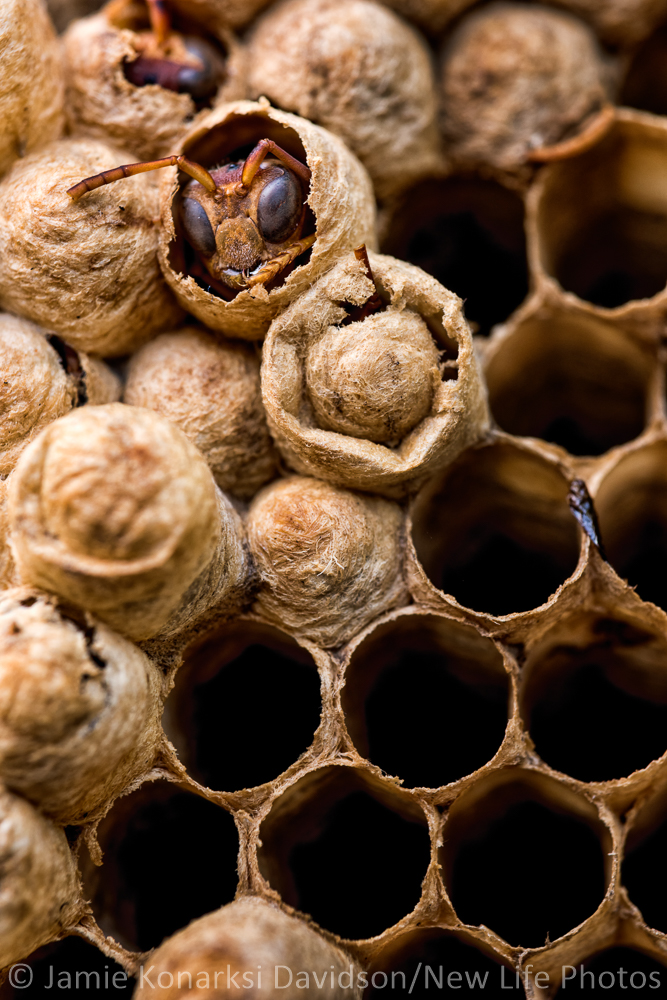
Sometimes, when people know you love the small and unusual, they will give you just the right material to work with.
What did I and we need to learn? There’s so much … lens choice, exposure, metering, composition, timing, lighting. And, now, in the digital age, there’s also post-processing and image management. Where do we start? Begin at the beginning, and it doesn’t start with “go out and buy a camera.” My first question would be, “Why?. Why do you want the camera?” Do you want to capture moments with family and friends or do you want to do more? Whatever the answer, it’s all good. The answer simply points you in the direction of what camera and how much you need to learn to do what you want to do well.
I grew up with parents whose favorite phrase seemed to be, “Go outside and find something to do.” I did, there was no negotiation in that regard. They also took us camping and encouraged our plundering the trails, gardens, woods and shorelines of nature. Here is where scenes and light would be stored in my memory. With my camera, I knew I wanted to do more than document. Without knowledge of the craft, I would forever be a picture taker and not the image maker I aspired to be. The tools would rule, and my vision would appear only when luck met chance upon release of the shutter. In those early days, I was not able to articulate vision. Yet, I wanted the images to say more than, “This is a (fill in the blank).” I wanted my work to say, “Look! Look at what I see and feel!” This is the path on which I have been walking and loving and sharing.
From a creative, kindred spirit perspective, the person who helped unleash the artist in me was Nancy Rotenberg. We first met in a small add in the back pages of Outdoor Photographer magazine in 1999. I had already bought my first macro lens and was working to create images that captured what I saw and felt in the world of small. I had the vision, but it wasn’t coming through in my slides. One phone call and a weekend with her at the farm in Pennsylvania began a friendship. From there, my work began to reflect my vision more clearly. The gifts I received from my time with Nancy was inspiration, encouragement and permission to be the artist/photographer. Here again was another turning point. There are many others who have helped me grow. I am certain there will be many more.
To echo the questions from childhood road trips, “Am I there yet?” No way. As Robert Frost once wrote, there are “miles to go before I sleep.” There is so much more to see, experience, learn and even more to share. This journey of mine may have had a distinct beginning, but it is one that will not end until my time on earth is done. For that I am grateful.
And for those who are just beginning, might I offer some encouragement? There is a lot to learn along the way. Always will be, that part never ends. Don’t give up. There are images you will only make if you are willing to step out of your comfort zone. Be brave. Be patient with yourself. Be true. Aspire to be the best you, not another version of someone you admire. Your vision will become clear and unique to you. Let it be. Let it grow.
